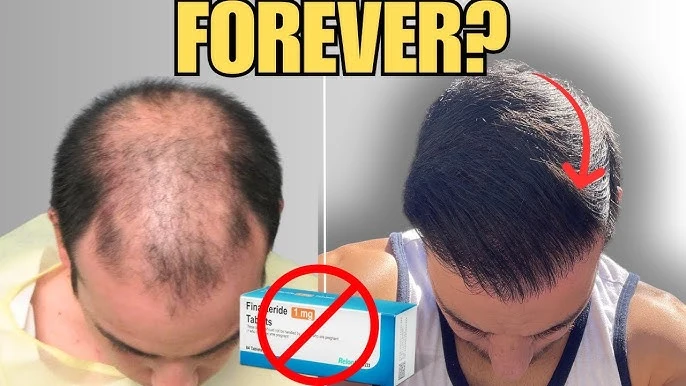Table of Contents
- Understanding Male Pattern Hair Loss
- The Psychological and Social Weight of Male Pattern Hair Loss
- The Role of FUE and Finasteride in Long-Term Hair Maintenance for Androgenetic Alopecia
- Finasteride Interactions and Contraindications
- Combination Therapy for Hair Loss
- The Risks and the Reality
- The Unspoken Benefits
- Should Finasteride Tablets Even Be Prescription-Only?
- Final Thoughts

I’ve prescribed finasteride for decades, and I’ve taken it myself for just as long. At 68, I have a full head of hair, no prostate symptoms, and a low PSA. I can’t run my life counterfactually—I can’t know what would have happened had I not taken the drug—but the benefits, at least in my case, are tangible. I also know plenty of men who have taken finasteride without issue. Like any medical intervention, it comes with risks, but the recent media focus on worst-case scenarios, such as those highlighted in The Wall Street Journal’s recent article, doesn’t capture the full reality.
Understanding Male Pattern Hair Loss
What is Finasteride?
The Psychological and Social Weight of Male Pattern Hair Loss
For many young men, hair loss isn’t just about losing strands of hair—it’s about losing status. For many, to lose hair is to lose a part of their identity and social standing. Some will say that embracing baldness is a viable option, and for some men, it absolutely is. But we don’t treat obesity with an encouraging pat on the back and a suggestion to embrace the extra weight. We offer solutions because we recognize that people’s self-image affects their well-being. The same logic applies to hair loss.


The Role of FUE and Finasteride in Long-Term Hair Maintenance for Androgenetic Alopecia
Many young men undergoing hair restoration opt for follicular unit extraction (FUE), a process in which individual hair follicles are transplanted from the back of the head to the balding areas. These transplanted hairs tend to have a different growth cycle than those affected by androgenetic alopecia, and while they often take hold in their new location, they are not immune to the same hormonal forces that caused the initial hair loss.
In the first six to seven months post-transplant, these newly relocated hairs struggle to adjust to their new environment. They go through a phase of shedding, re-growth, and eventual stabilization. While the FUE procedure gives a patient a refreshed hairline, the surrounding native hair—especially near the crown—continues to thin unless properly maintained. Without finasteride, a man may find that a year or two after his transplant, he develops a stark contrast between the stable transplanted area and the newly receded zones beyond it. This can result in an effect reminiscent of a “Dominican monk” pattern—where the hairline looks strong, but a noticeable thinning forms just beyond the crest of the restored hair.

This is why many leading hair transplant surgeons strongly recommend finasteride post-transplant, especially for young men. It helps protect the native, non-transplanted hair from continued recession, ensuring a more uniform, natural appearance over time. Without it, men may find themselves needing additional transplants as their natural hairline continues to retreat, leading to a cycle of repeated procedures. If one is already committed to the investment, discomfort, and healing time of an FUE procedure, it makes sense to maximize and protect the results with a medication proven to slow hair loss. Finasteride is specifically recommended post-transplant to treat male pattern baldness, reducing dihydrotestosterone (DHT) levels in the scalp and improving hair density. “Melvin” from Hair Transplant Network posted this provocative image, but his recommended alternative was topical finasteride (over the tablets), but he acknowledged it didn’t work as well. He also stated that young people getting the hair transplant should strongly consider taking finasteride (or other 5-alpha-reductase inhibitor medication) tablets.

Finasteride Interactions and Contraindications
Combination Therapy for Hair Loss
The Risks and the Reality
Clinical trials suggest that sexual side effects occur in about 3.8% of men, while placebo groups report a 2.1% occurrence. The real risk may be slightly higher or lower depending on the individual, but these numbers suggest that the overwhelming majority of men tolerate finasteride well. The problem is that those who experience no issues don’t make headlines. Instead, the focus remains on the horror stories.
The Unspoken Benefits
Should Finasteride Tablets Even Be Prescription-Only?
Final Thoughts
Peak Masculinity
Starts Here

By Dr. Ryan Welter
August 16, 2025




